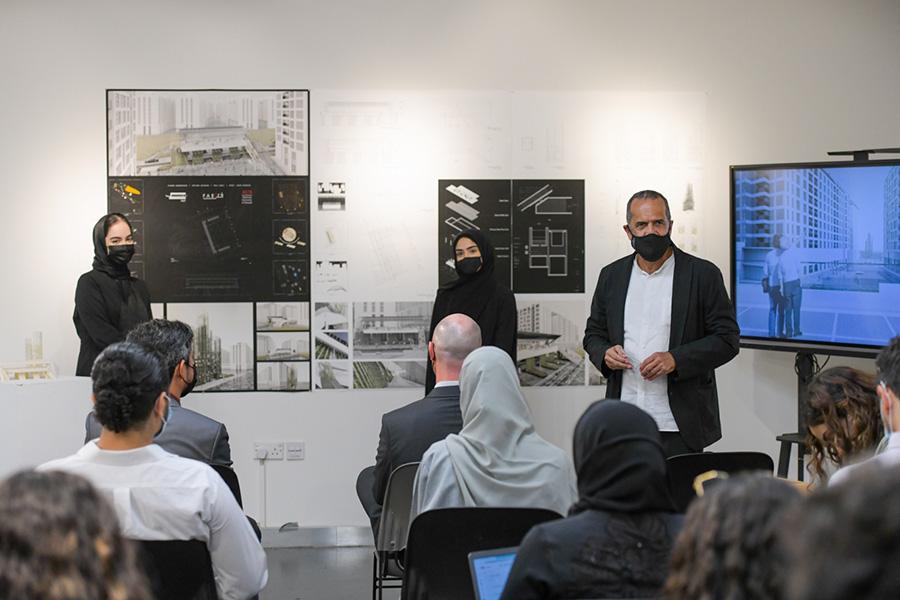- About
- Admissions
- Study at AUS
- Prospective Students
- Bachelor's Degrees
- Master's Degrees
- Doctoral Degrees
- Admission Publications
- International Students
- Contact Admissions
- Grants and Scholarships
- Sponsorship Liaison Services
- Testing Center
- New Undergraduate Student Guide
- Undergraduate Orientation
- New Graduate Student Guide
- Graduate Orientation
- File Completion
- Payment Guide
- Students with Disabilities
- Executive and Continuing Education
- Academics
- Life at AUS
- Research
- Publications
- Contact Us
- Apply Now
- .

AUS students to provide design solutions for Sharjah’s new Al Mamsha community
Sharjah’s first fully walkable modern community, a project by Alef Group, will feature designs by students from the College of Architecture, Art and Design (CAAD) at American University of Sharjah (AUS). The students have proposed a series of green sculptures and a pedestrian bridge to enhance the walkability of the Al Mamsha development, which aims to bring together modern living, retail and leisure in a pedestrian-friendly and tech-savvy environment.
Fourth-year architecture students working under AUS Professor of Practice of Architecture Dr. Igor Peraza unveiled their design proposals to Alef Group representatives in an outdoor exhibition at Al Mamsha in November, and presented them again on campus at AUS earlier this week. The students’ designs included small-scale landscape structures for shading and connectivity as well as large-scale structures, including pedestrian bridges connecting different zones of Al Mamsha that offer shading structures, an observation area, working area, and a place to meet and socialize.
Following this week’s studio presentations, Alef Group will select a number of the designs to be considered by its engineers for integration into the Al Mamsha community masterplan to be constructed in 2022. Students will have the opportunity to work alongside Alef Group’s own team of designers, engineers and MEP staff.
Lorenzo Pagnini, Head of Design at Alef Group, said the collaboration with AUS students aligns with the developer’s core values.
“One of Alef Groups core philosophies is to engage with the local community. I believe there is no better way than to involve and immerse the students in the design process as they will become the backbone of the community in the future. They will also be the ones that will live in and spend time in these spaces, and this is reflected in the innovative and imaginative solutions that they presented,” said Pagnini.
Professor Peraza said the concept of urban “walkability”—that is, how friendly an area is to pedestrian use, well-being and physical activity—has become a point of focus for urban planners and designers as they consider broader issues of public health, climate change, economic productivity and social equity.
“As we continue to embrace principles of sustainability, we are preparing our students to be more sensitive to the broader issues related to the livability of their designs. As designers, we need to design with the end user in mind, including issues of affordability, how the space will help bring people together, and how it will impact wellness,” said Professor Peraza.
For more information about the programs offered by the College of Architecture, Art and Design at American University of Sharjah, visit www.aus.edu/caad.

